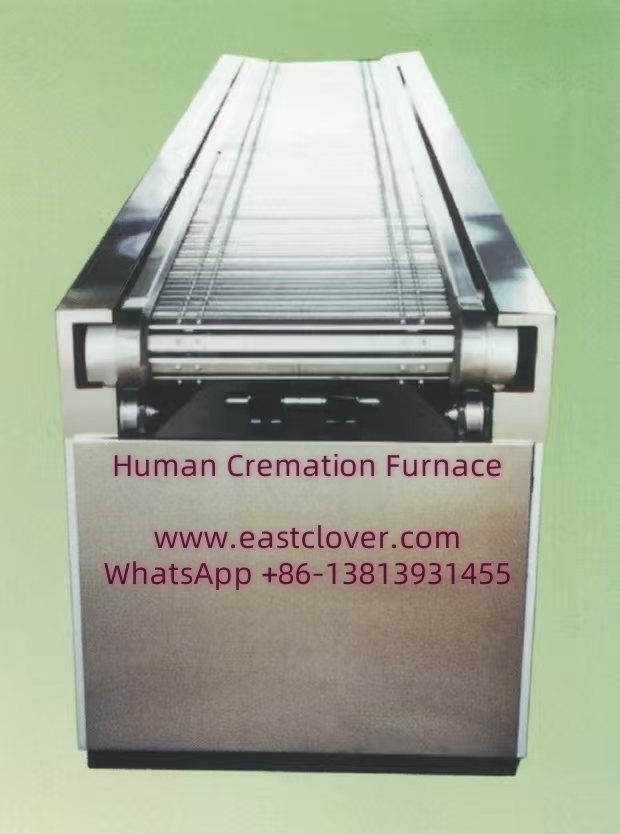Introduction
Africa’s rapidly growing population and accelerating urbanization are placing unprecedented pressure on traditional end-of-life practices. Burial, the dominant method for handling human remains across much of the continent, is increasingly unsustainable due to land scarcity, environmental degradation, and public health concerns. In response, communities and governments are exploring innovative solutions, with high-efficiency cremation furnaces emerging as a viable and sustainable alternative. These advanced systems not only address the practical challenges of space and resource constraints but also align with global efforts to reduce carbon footprints and promote ecological responsibility.
What Are High-Efficiency Cremation Furnaces?
High-efficiency cremation furnaces are technologically advanced systems designed to incinerate human remains at extremely high temperatures (800–1,100°C) while minimizing energy consumption and environmental impact. Key features include:
- Advanced Combustion Systems: Dual-chamber designs and automated temperature controls ensure complete combustion, reducing waste and emissions.
- Energy Recovery: Heat recapture mechanisms convert excess thermal energy into electricity or heating for adjacent facilities.
- Emissions Control: Filters, scrubbers, and catalytic converters capture particulate matter, heavy metals, and harmful gases like nitrogen oxides (NOₓ) and carbon monoxide (CO).
- Durability: Constructed from refractory materials to withstand extreme heat, ensuring longevity and reducing maintenance costs.
Unlike traditional wood pyres or outdated cremators, these furnaces prioritize efficiency, safety, and environmental compliance.
Sustainability Benefits in the African Context
High-efficiency cremation addresses multiple sustainability challenges in Africa:
- Land Conservation: Urban cemeteries consume valuable land, which could otherwise support housing or agriculture. Cremation reduces land use by over 90%.
- Resource Preservation: Eliminates the need for non-biodegradable caskets, embalming chemicals, and concrete burial vaults, conserving natural resources.
- Carbon Footprint Reduction: Modern furnaces emit 50–70% fewer greenhouse gases than traditional open-air pyres and burials, which release methane from decomposing bodies.
- Public Health Improvements: Controlled incineration destroys pathogens, reducing the risk of disease spread in overcrowded urban areas.
Challenges to Adoption
Despite their benefits, high-efficiency cremation systems face barriers in Africa:
- High Initial Costs: Advanced furnaces require significant upfront investment ($50,000–$200,000), deterring cash-strapped municipalities.
- Cultural Resistance: Many communities prioritize burial due to religious beliefs or ancestral traditions. For example, in Ghana, elaborate funerals are central to cultural identity.
- Infrastructure Gaps: Unreliable electricity supplies in rural areas complicate furnace operation, though solar-powered models are emerging.
Opportunities for Growth
Strategic initiatives could accelerate adoption:
- Public-Private Partnerships: Collaborations between governments and firms like Kenya’s Eco Cremators Ltd. can subsidize costs and raise awareness.
- Local Manufacturing: Producing furnaces in Africa using locally sourced materials could cut costs by 30–40% and create jobs.
- Community Engagement: Education campaigns highlighting cremation’s ecological and economic benefits can shift perceptions. South Africa’s “Green Funeral” initiative saw a 22% increase in cremation rates after targeted outreach.
- Renewable Integration: Solar- or biogas-powered furnaces, such as pilot projects in Nigeria, reduce reliance on inconsistent grid electricity.
Case Studies: Pioneering Success
1. South Africa: The City of Cape Town installed a high-efficiency furnace in 2021, reducing cremation-related emissions by 65% and saving 4 hectares of land annually.
2. Kenya: A partnership between Nairobi County and the UNDP introduced modular cremators powered by agricultural waste, serving urban and rural communities.
3. Ghana: The Accra Sustainable Burial Project combines cremation with tree-planting ceremonies, aligning modernity with cultural reverence for ancestors.
www.southclover.com
High-efficiency cremation furnaces represent a transformative solution for Africa’s end-of-life challenges. By conserving land, reducing emissions, and improving public health, these systems align with the continent’s sustainable development goals. However, success hinges on addressing cultural norms, infrastructure gaps, and financial barriers through innovation, education, and collaboration. As urbanization intensifies, embracing modern cremation technologies will be crucial to building resilient, eco-conscious communities.
Frequently Asked Questions (FAQs)
1. How do high-efficiency cremation furnaces work?
These furnaces use dual combustion chambers and advanced filters to incinerate remains at high temperatures while capturing pollutants. Energy recovery systems often repurpose excess heat for community use.
2. Are cremations environmentally safer than burials?
Yes. Modern cremation produces fewer greenhouse gases and prevents groundwater contamination from embalming chemicals. It also avoids long-term land degradation.
3. Why is adoption slow in Africa?
Cultural preferences for burial, high upfront costs, and limited infrastructure are primary barriers. However, pilot projects show growing acceptance in urban areas.
4. Can cremation coexist with traditional practices?
Yes. Hybrid models, such as memorial services with ash-scattering ceremonies, allow families to honor traditions while embracing sustainability.
5. How can governments support this transition?
Subsidies, public awareness campaigns, and partnerships with tech providers can make cremation accessible and culturally acceptable.

Comments are closed